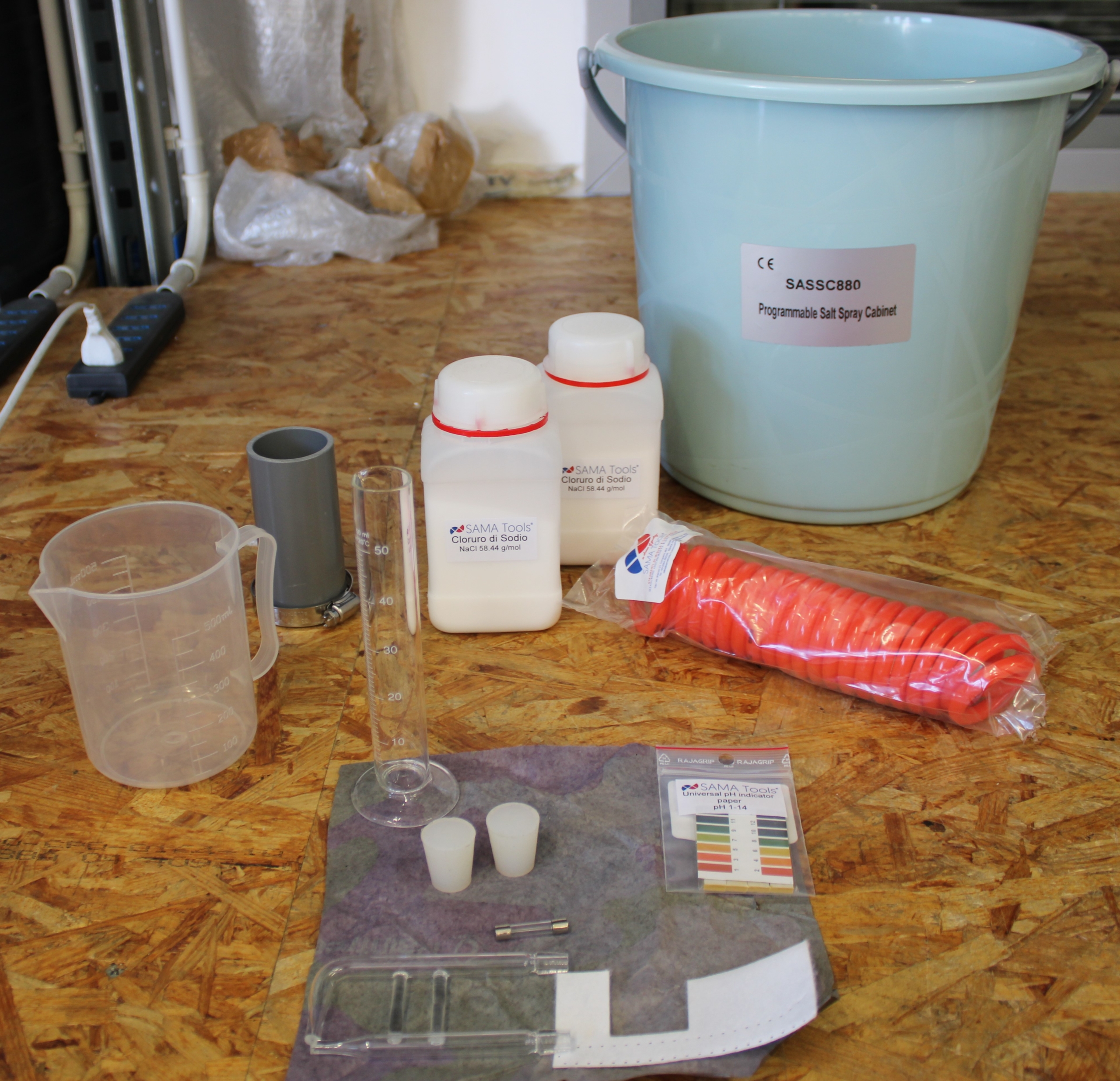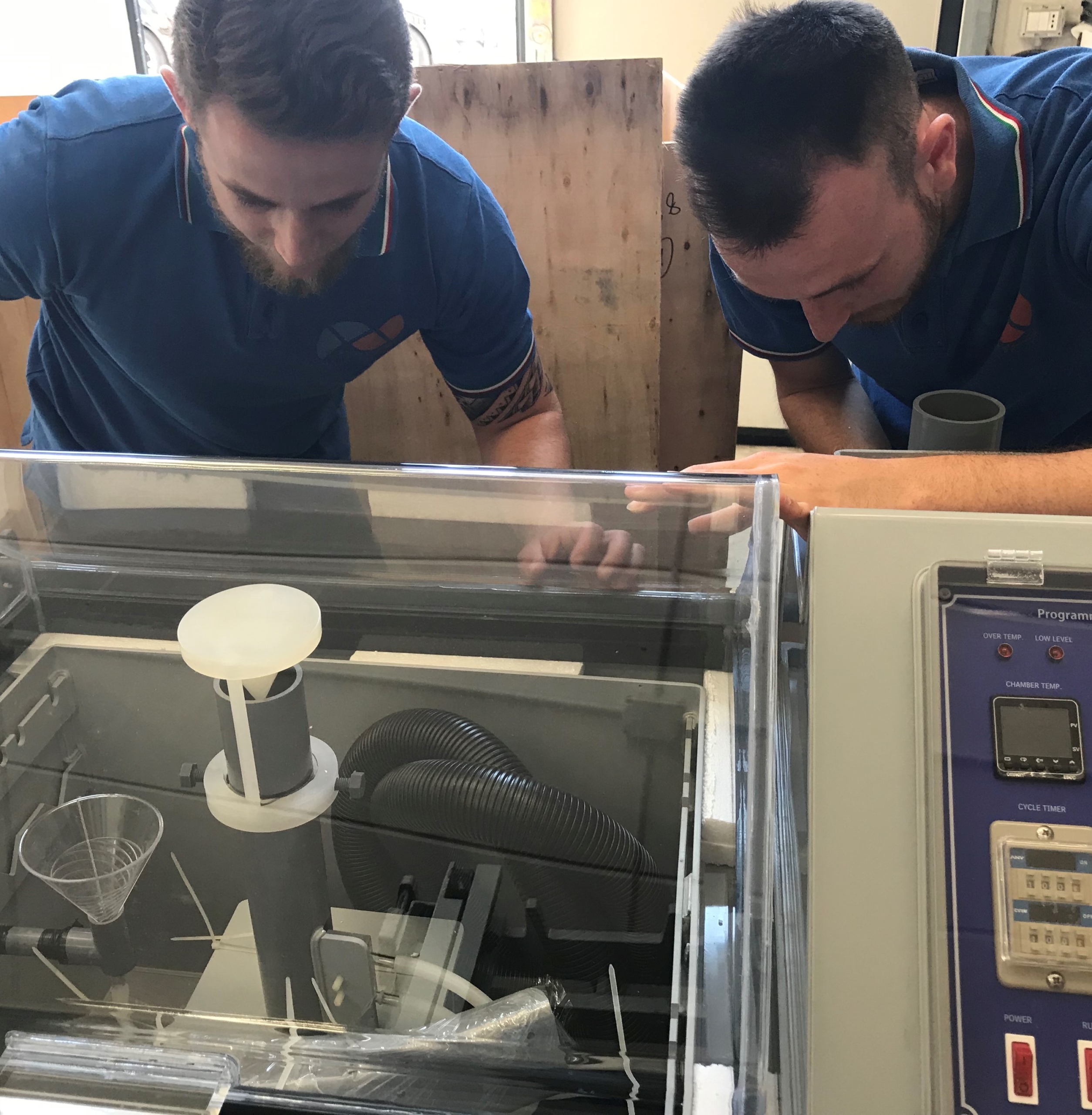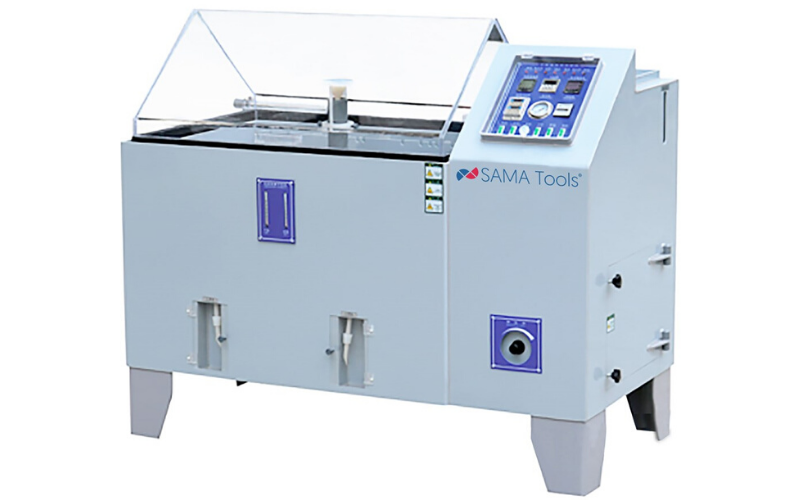Salt spray test to check corrosion resistance
What is the salt spray test?
The salt spray test is a standardized test method used to check corrosion resistance of coated samples.
During the salt spray test, an accelerated corrosive attack is produced in order to predict the coated samples suitability in use as a protective finish.
Salt spray tests are generally employed to produce rapid comparisons between expected and real corrosion resistance.

How the test works?
Tests are carried out in a closed testing chamber.
A salt-water solution is applied to a sample through a spray nozzle.
This produces a corrosive environment of dense saline fog to emulate a corrosive experiment.
The appearance of corrosion products (oxides) is evaluated after a period.
The more corrosion resistant the coating is the longer will be the period in testing without showing signs of corrosion.
Tests can take between 24 and over 1000 hours for certain coatings.

[Video] Salt spray test to check corrosion resistance
Which is the UNI reference standard?
The reference standard is UNI EN ISO 9227: 2006: Corrosion tests in artificial atmospheres – Salt fog tests.
It defines the equipment, reagents and procedures that must be used to perform the tests in neutral salt spray (NSS), salt spray-acetic (AASS) and cupro acetic salt spray (CASS).
The aim is to evaluate the corrosion resistance of metallic materials, with or without permanent or temporary anti-corrosive protections.
The standard does not indicate the duration of the salt spray tests since it is indicated by the product standards.

Why a salt spray cabin is so useful?
The resistance results of a material or coating to corrosion in a salt spray test is useful to determine the strength of a particular fastener or coating for the purpose of your production needs.
Watch the salt spray cabin test!

 S.A.M.A. Italia srl
S.A.M.A. Italia srl



